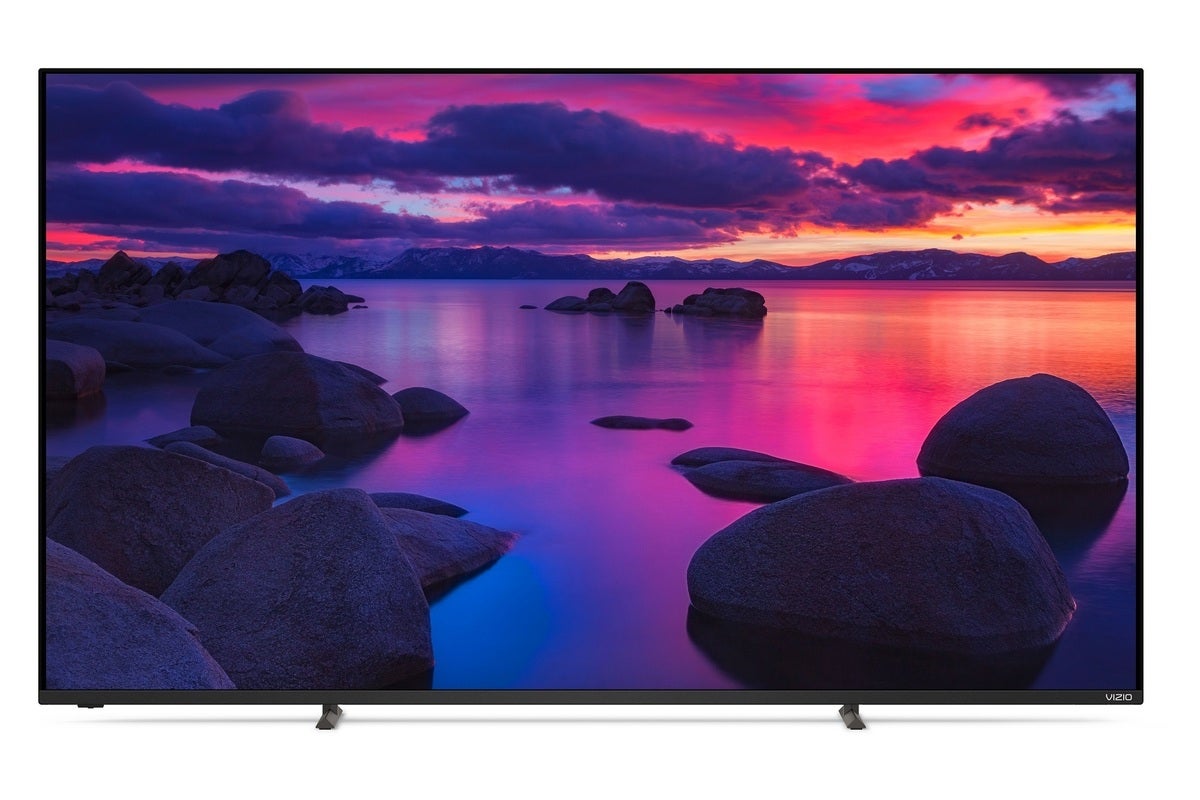Vizio makes incremental improvements to its smart TV lineup, beefing up processing power and offering FreeSync support and 120Hz refresh rates at the top end.

Vizio
Today’s Best Tech Deals
Picked by TechHive’s Editors
Top Deals On Great Products
Picked by Techconnect’s Editors
Vizio announced it’s 2022 lineup of TVs today, and there are improvements throughout. Mild improvements in most cases, but they’re better nonetheless. There’s a rather confusing eight different series in the works.
The entry-level D-series (if you Don’t have the money for 4K UHD) is a 60Hz, 720p or 1080p TV with a standard (i.e., non-voice) remote, array backlighting (no local dimming zones), and Wi-Fi, but no Bluetooth. It’s available with 720p resolution in 24-inch ($140) and 32-inch ($180) sizes, and with 1080p resolution in 40-inch ($250) and 43-inch sizes ($300). Make sure which you’re buying.
The D4-series is basically the same TV with AMD’s FreeSync added for another $20, but it’s only available in 24- and 32-inch flavors (with 1080p resolution). If you game, you’ll want FreeSync. These TVs also come with a standard remote.
Next up the ladder is the 60Hz, 4K UHD V5-series, with a voice remote, Wi-Fi and Bluetooth 5.0, array backlighting (still no local dimming zones), and support for eARC. This series also understands HDR in the form of Dolby Vision, HDR10, HDR10+, and HLG. It seems Samsung’s HDR10+ is picking up momentum. It’s available in 43-inch ($340) through 75-inch ($900) screen sizes. Vizio includes its new Vizio Voice Remote with this series on up.
 Vizio
VizioVizio’s V5-series of 4K UHD smart TVs is available in sizes ranging from 43 to 75 inches with full-array backlighting (i.e., no local dimming zones).
The Vizio V6-series is once again essentially is the same TV as the V5-series, but with the addition of AMD FreeSync. It’s available only in 70- and 75-inch sizes.
The “Q” in the MQ6-series should tip you off to the presence of quantum-dot color in these 4K UHD models. Available in 43- ($400) through 75-inch ($1000) models, the series delivers 75 percent of the Rec. 2020 color gamut. They come with Vizio’s new voice remote, eARC (the enhanced Audio Return Channel), Bluetooth, and 4K/60Hz HDMI 2.1 ports. There’s a full-array backlight without local dimming zones.
Step up to the MQ7-series and you get a 60Hz panel with up to 32 local dimming zones (depending on size) that delivers 84 percent of Rec. 2020 color gamut. Both MQ7 models support Dolby Vision, HDR10/HDR10+, and HLG. The 70-inch MQ7 goes for $1,200, and the 75-inch version will set you back $1,400. Both offer 700 nits of brightness and will likely display more of that HDR pop.
You’ll find the PQ9-series near the top of Vizio’s line: There are 65- ($1,400) and 75-inch ($2,200) SKUs here, each delivering 1,200 nits of peak brightness. The 85-inch PQX resides at the very top of the line, providing a whopping 3,000 nits of peak brightness (pricing for the PQX had not been disclosed at press time). These three TVs take the best features of the MQ7-series (quantum-dot color, HDR, eARC, etc.) and marry it with Vizio’s best image processor, the IQ Ultra; HDMI 2.1 with a 120Hz refresh rate; FreeSync Premium support; and backlight arrays with local dimming zones (up to 210 on the PQ9-series and 792 on the PQX).
The PQX delivers 85 percent of Rec. 2020, one percent higher than the PQ9-series. Vizio describes the PQ9-series as “bezel-less” on three sides and the PQX as “bezel-less” on all four sides, but that’s a bit of hyperbole—something has to be wrapped around the glass.
 Vizio
VizioVizio describes its PQ9-series TV as being “bezel-less” on three sides.
The full line of Vizio’s 2022 TVs feature Vizio’s SmartCast user interface, which pairs with a simply designed remote control to deliver a synergy we appreciated when evaluating the 2021 V6-series TV. The combo is quite efficient, and the universal channel guide effectively consolidates online, curated, and over-the-air (and cable) content. And you can get the voice-remote experience even with the D-series TVs by downloading Vizio’s SmartCast Mobile app to your Android or iOS smartphone or tablet.
 Vizio
VizioVizio’s SmartCast interface. Not shown is an excellent channel/programming guide that combines cable/OTA, streaming and other content.
Noticeably absent from Vizio’s announcement this year: Any 8K UHD TVs and any model with mini-LED backlighting.
This article was edited on 6/3/2021 to correct some size and pricing information as well as the MQ7 having up to 32 zones, varying by size.
Note: When you purchase something after clicking links in our articles, we may earn a small commission. Read our affiliate link policy for more details.
Jon is a Juilliard-trained musician, former x86/6800 programmer, and long-time (late 70s) computer enthusiast living in the San Francisco bay area. [email protected]

